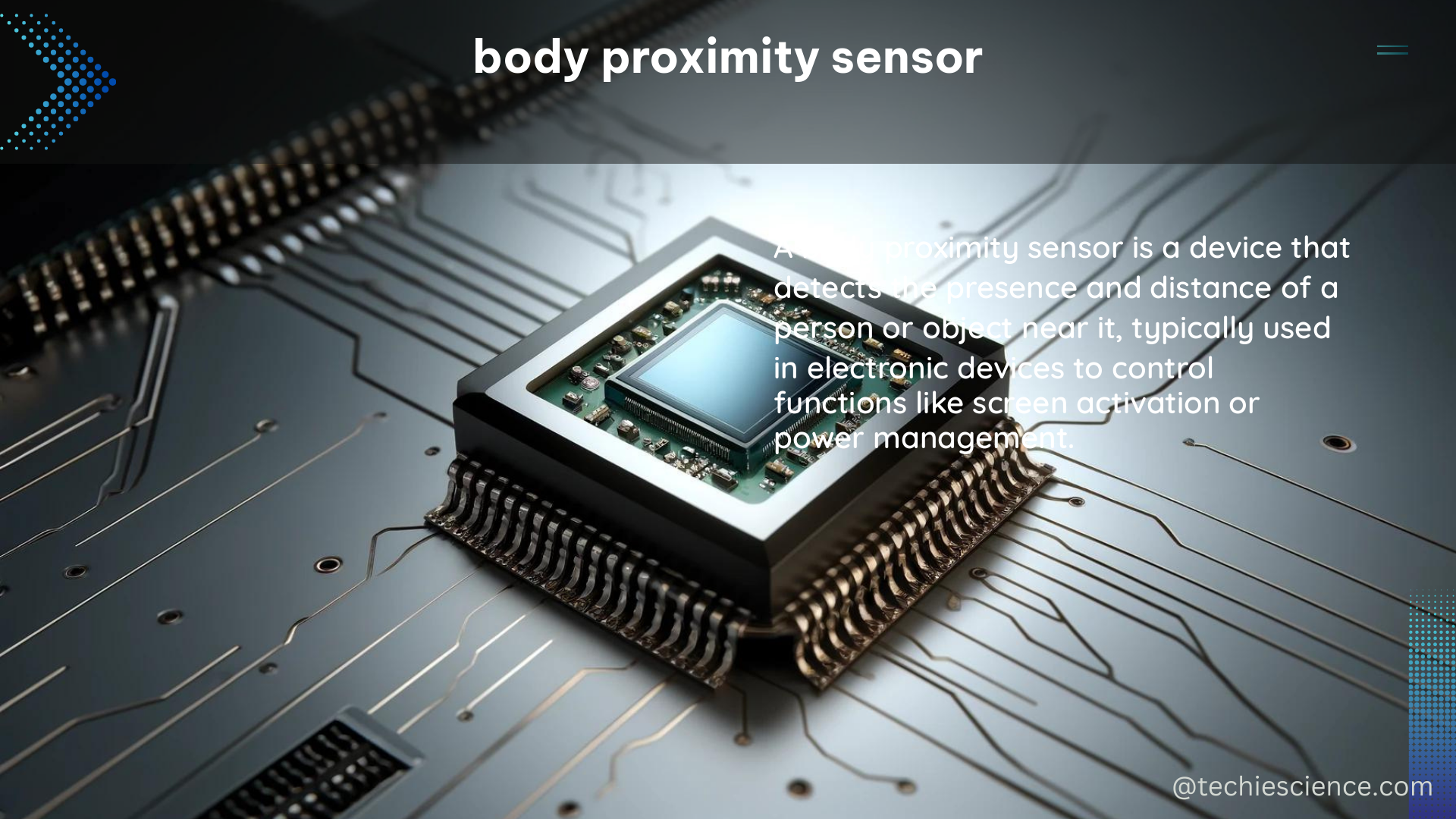Body proximity sensors are a crucial technology that have found widespread applications in various industries, from touchless control of electronic devices to automatic door opening and closing, and even intrusion detection. These sensors work by detecting the presence or absence of an object or person in close proximity, making them an indispensable tool in modern automation and smart technology.
Understanding Capacitive Proximity Sensors
One of the most common types of body proximity sensors is the capacitive proximity sensor. These sensors operate by detecting changes in the capacitance of a sensing element when an object or person comes close to it. The sensing element is typically a metal plate or a pair of metal plates separated by a small gap. When an object or person approaches the sensing element, the capacitance of the element changes, and this change is detected by the sensor.
Technical Specifications of Capacitive Proximity Sensors
The technical specifications of a capacitive proximity sensor can vary depending on the specific application. Some of the key specifications to consider include:
-
Sensing Range: The distance over which the sensor can reliably detect the presence of an object or person. This range can vary from a few millimeters to several meters, depending on the size and shape of the sensing element, as well as the properties of the object or person being detected.
-
Response Time: The time it takes for the sensor to detect the presence of an object or person and generate a corresponding output signal. Sensors with shorter response times are generally more desirable as they can provide more rapid and accurate detection.
-
Operating Temperature Range: The range of temperatures over which the sensor can operate reliably. Sensors with wider operating temperature ranges are more versatile and can be used in a wider range of environments.
-
Power Consumption: The amount of electrical power required by the sensor to operate. Sensors with lower power consumption are generally more desirable as they can operate for longer periods on a single battery charge.
Factors Affecting Sensor Performance
The performance of a capacitive proximity sensor can be influenced by a variety of factors, including:
-
Sensing Element Size and Shape: Larger sensing elements generally have a longer sensing range, while smaller elements can provide more precise detection.
-
Material Properties: The material composition of the sensing element and the surrounding environment can affect the sensor’s sensitivity and accuracy.
-
Environmental Conditions: Factors such as temperature, humidity, and electromagnetic interference can impact the sensor’s performance and reliability.
-
Calibration and Tuning: Proper calibration and tuning of the sensor’s parameters can optimize its performance for a specific application.
Other Types of Body Proximity Sensors

In addition to capacitive proximity sensors, there are several other types of body proximity sensors available, each with its own unique set of technical specifications and applications:
-
Infrared Proximity Sensors: These sensors detect the presence of an object or person by measuring the infrared radiation emitted by the target.
-
Ultrasonic Proximity Sensors: These sensors use high-frequency sound waves to detect the presence and distance of an object or person.
-
Microwave Proximity Sensors: These sensors use microwave radiation to detect the presence and movement of an object or person.
Each of these sensor types has its own advantages and disadvantages, and the choice of sensor will depend on the specific requirements of the application.
Building Your Own Body Proximity Sensor
For those interested in building their own body proximity sensor, there are numerous resources available online, such as tutorials on the Instructables website. These tutorials provide step-by-step instructions on how to build and test a capacitive proximity sensor using Arduino microcontrollers and other components.
When building a body proximity sensor, it’s important to consider the following factors:
-
Sensor Selection: Choose the appropriate sensor type (e.g., capacitive, infrared, ultrasonic) based on the specific requirements of your application.
-
Circuit Design: Carefully design the electronic circuit to ensure reliable and accurate sensor operation.
-
Calibration and Tuning: Properly calibrate and tune the sensor’s parameters to optimize its performance.
-
Integration with Other Systems: Integrate the sensor with other electronic devices or systems, such as microcontrollers or IoT platforms, to enable advanced functionality.
By following these guidelines and leveraging the wealth of online resources, you can create your own customized body proximity sensor to suit your specific needs.
Conclusion
Body proximity sensors are a versatile and essential technology that have found numerous applications in modern automation and smart systems. Understanding the technical specifications and factors that influence sensor performance is crucial when selecting or designing a body proximity sensor for a specific application.
Whether you’re working with commercial off-the-shelf sensors or building your own custom solution, the key to success lies in a deep understanding of the underlying principles and a willingness to experiment and refine your approach. By mastering the intricacies of body proximity sensors, you can unlock a world of possibilities in touchless control, automated systems, and beyond.
References
- Organic Bioelectronic Devices for Metabolite Sensing. ACS Chemical Reviews. https://pubs.acs.org/doi/10.1021/acs.chemrev.1c00395
- Biosensors and their widespread impact on human health. ScienceDirect. https://www.sciencedirect.com/science/article/pii/S2666351123000311
- Trends in Workplace Wearable Technologies and Connected … Wiley Online Library. https://onlinelibrary.wiley.com/doi/full/10.1002/aisy.202100099
- Human Factors Considerations for Quantifiable Human States in … National Center for Biotechnology Information. https://www.ncbi.nlm.nih.gov/pmc/articles/PMC10490212/
- Sensors for daily life: A review – ScienceDirect.com. ScienceDirect. https://www.sciencedirect.com/science/article/pii/S2666351121000425

The lambdageeks.com Core SME Team is a group of experienced subject matter experts from diverse scientific and technical fields including Physics, Chemistry, Technology,Electronics & Electrical Engineering, Automotive, Mechanical Engineering. Our team collaborates to create high-quality, well-researched articles on a wide range of science and technology topics for the lambdageeks.com website.
All Our Senior SME are having more than 7 Years of experience in the respective fields . They are either Working Industry Professionals or assocaited With different Universities. Refer Our Authors Page to get to know About our Core SMEs.